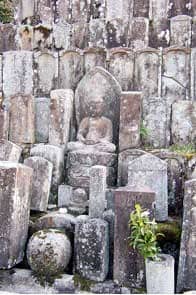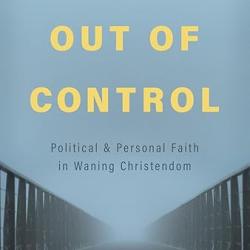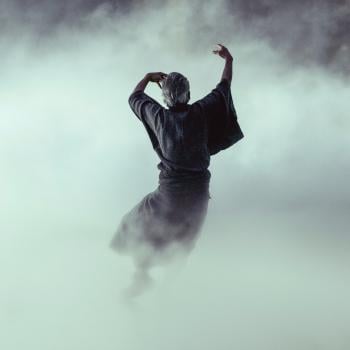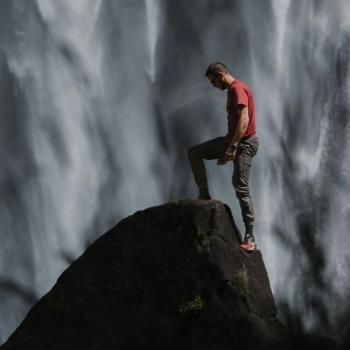By Manjuvajra
 ‘What will happen when I die?' is one of the most important questions a human being can ask. To find an answer is to discover a deeper meaning to life. To know that there is at least a part of oneself that survives death would provide a much wider perspective on existence, a perspective that could radically transform the way we lived our life.
‘What will happen when I die?' is one of the most important questions a human being can ask. To find an answer is to discover a deeper meaning to life. To know that there is at least a part of oneself that survives death would provide a much wider perspective on existence, a perspective that could radically transform the way we lived our life.
On one level, the answer is simple. At some time, our complex bio-physical organism will break down. The breathing will stop, the heartbeat will cease, and gradually our body temperature will fall. After a while, the body will go stiff and start to decay. Eventually it will be burned or buried. And, for the materialist, that will be that! But perhaps there is more to us than just our physical bodies. Perhaps there is something that survives the death of the physical body, a ‘soul'. If so, what is its nature?
The view of the Christian-Islamic tradition is that the soul of the individual comes into being at conception. It lives but one short life on this earth, and then, after divine judgment, is awarded eternal happiness in heaven, or eternal suffering in hell.
According to the Buddhist view, what happens to an individual after death is closely linked to the way he or she has acted in life. Rebirth and karma (action) are usually spoken of together. According to the Buddha's understanding we are born into a particular type of body with a particular perception of the world because of deep-seated tendencies, inherited from our previous existence to experience reality in a particular way. These tendencies manifest as our conscious world-view develops. Whenever we act in conformity with such a tendency we strengthen it. When we oppose our inherited tendency we will weaken it, and may thus alter our viewpoint of reality. Our views can therefore be modified, either consciously or unconsciously, by our own efforts, or by the influence of our environment. Thus, at the end of our life, the set of views and tendencies with which we started may be substantially altered. The ‘person' who dies could be quite different from the ‘person' who was born. Then, although the body dies, that bundle of tendencies survives and, after a certain period of time -- some say that it is instantaneous and some say the period is many years -- creates for itself a new body.
A crucial element of this teaching, which distinguishes it from those held by Hindus and some heretical Christian sects, is that the element of the individual that precedes birth and survives death is not a fixed and permanent entity. The habitual tendencies -- the patterns developed and modified by actions in the course of this life -- are passed onto the next, and nothing else. There is no fixed core that can be called a ‘soul' or an ‘I'. The ‘I' that we experience is actually our awareness of this complex set of habitual tendencies, which have formed themselves into a sort of knot. Until Enlightenment is reached the knot always exists, but its constituent contents can change. It is this ‘knot' that passes from one life to the next.
In the scriptures of the three main branches of Buddhism there are many references to the principle of rebirth. In the earliest Pali scriptures, the Buddha speaks of his recollection of his own previous births on the eve of his Enlightenment, and of his ability to see the arising and passing away of other beings. On a number of occasions Ananda asked the Buddha where a certain person who had died would be reborn, and the Buddha was able to answer. In the Sanskrit scriptures of the Mahayana there are numerous references to the number of lifetimes that a Bodhisattva traverses on the path to perfect Enlightenment. There we also find predictions of the Enlightenment of Bodhisattvas in some far distant future lifetime. In both the Mahayana and the Vajrayana scriptures there are many references to groups of individuals being born together again and again.
In Tibetan Buddhism we find the tradition of the tulku, the rebirth of a particular spiritual teacher. The abbots of monasteries are often considered to be reborn in this way, and once an abbot dies his regent governs the monastery until the new incarnation is discovered, usually by finding a child, born at the right time, who can select religious implements owned by the old abbot from a collection of similar objects. Also in the Tibetan tradition we find meditation practices that prepare the practitioner for the journey through the bardo, the intermediate period between one birth and the next.
What actually happens when we die? A fascinating account of the dying process is to be found in the Bardo Thodol or Tibetan Book of the Dead. This describes the entire process of death, the period in the intermediate state, and eventual rebirth. At the moment of death, the text explains, a blinding experience of clear light fills our consciousness. This ‘vision of Reality' offers us an opportunity to free ourselves from the tendencies that will otherwise lead to rebirth. If the light is too much for us, we then become conscious that we are separated from the physical body and now exist in an immaterial mind-body rather like the body experienced in dreams.




